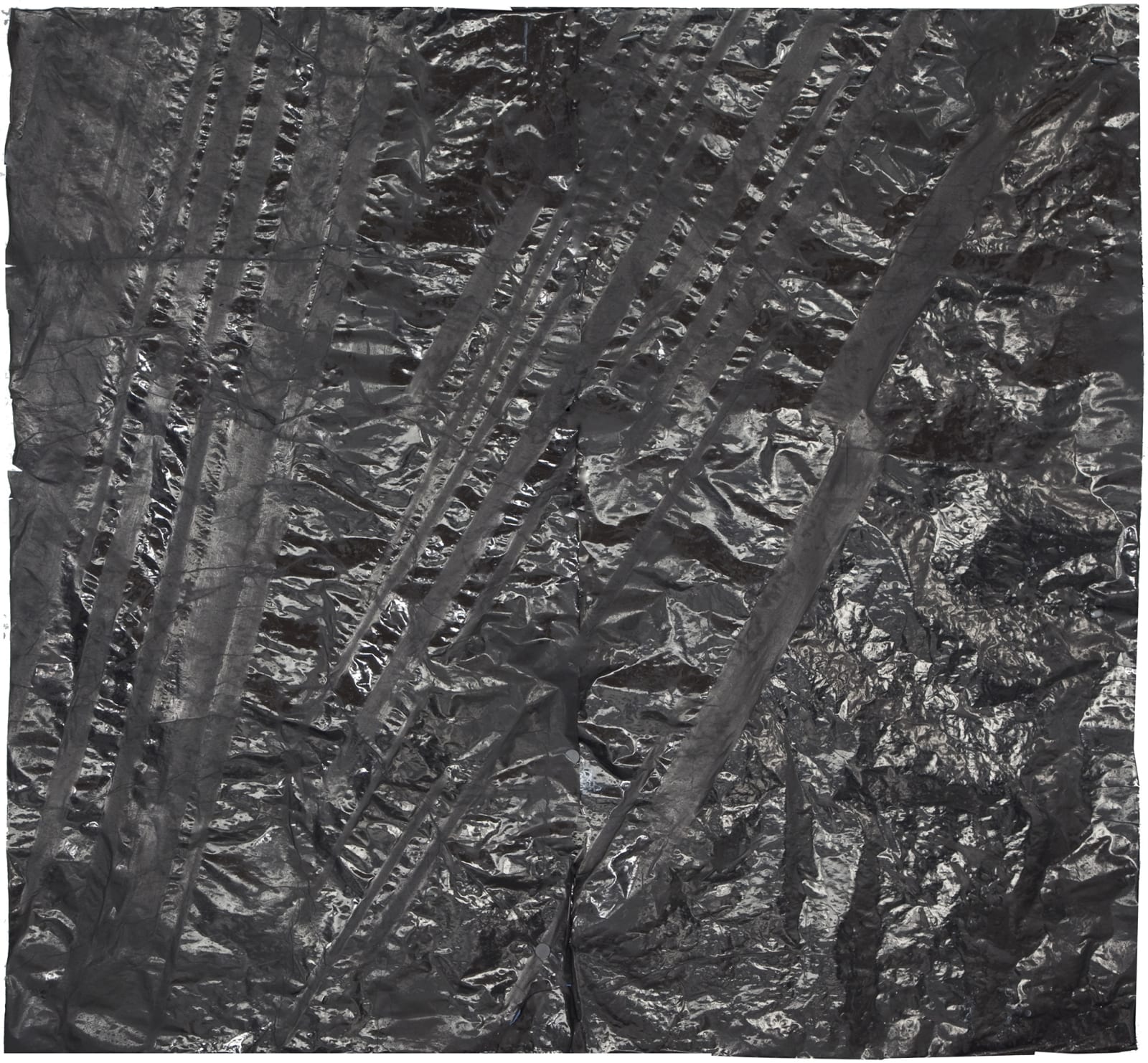Zheng Chongbin 郑重宾
Terrain 地势, 2014
Ink and acrylic on xuan paper 墨 丙烯 宣纸
72 1/4 x 79 3/8 in
183.5 x 201.5 cm
183.5 x 201.5 cm
Copyright The Artist
As you can see, this work is unmounted, meaning the work is pure ink on xuan paper without mounting and without backing paper. There is also no acrylic in the...
As you can see, this work is unmounted, meaning the work is pure ink on xuan paper without mounting and without backing paper. There is also no acrylic in the work so in terms of medium, this is a very pure physical expression of Chongbin's core materials of ink, paper and water. This movement away from painting as a representation or a depiction to painting as a material object finds its most pure expression in this work. As an unmounted, warped and uneven sheet, it is no longer a perfectly smooth, 2-dimensional surface, but somwhere between two and three dimensions—it is a surface but it exists in three-dimensional space and must also be taken as an object. Interestingly, once he achieved this almost conceptually perfect, physical expression of ink and paper, he never repeated himself. One might ask, why is this?
The reason why this form is never again repeated is because it led Chongbin out of painting and into his installation and video practice. Chongbin was drawn to the way light was reflected by the crystalized ink in this work. Ink is black, an amost perfect absorber of light; and yet crystalized ink is also highly reflective. How can black ink both absorb and reflect light at the same time? This question—a paradox of material and its perception—Chongbin then begins to explore through his first major light and space and environmental video installations Wall of Skies and Chimeric Landscape, both from 2015. Specifically, the crystiallized black ink Chongbin used in Terrain found its way into Wall of Skies as the eponymous "wall" of ink—the black object in a white installation space. The reflective black of Terrain, on the other hand, became the black, reflective installation space for the video artwork Chimeric Landscape—relfective black on the one hand as object and on the other hand as space. Today, Chongbin's fame as an artist rests on the three corners of his practice: his painting, his light-and-space installation, and his video art. All three practices, howevever, find a common, seminal nexus in Terrain.
The reason why this form is never again repeated is because it led Chongbin out of painting and into his installation and video practice. Chongbin was drawn to the way light was reflected by the crystalized ink in this work. Ink is black, an amost perfect absorber of light; and yet crystalized ink is also highly reflective. How can black ink both absorb and reflect light at the same time? This question—a paradox of material and its perception—Chongbin then begins to explore through his first major light and space and environmental video installations Wall of Skies and Chimeric Landscape, both from 2015. Specifically, the crystiallized black ink Chongbin used in Terrain found its way into Wall of Skies as the eponymous "wall" of ink—the black object in a white installation space. The reflective black of Terrain, on the other hand, became the black, reflective installation space for the video artwork Chimeric Landscape—relfective black on the one hand as object and on the other hand as space. Today, Chongbin's fame as an artist rests on the three corners of his practice: his painting, his light-and-space installation, and his video art. All three practices, howevever, find a common, seminal nexus in Terrain.
展览
2014 Shuimo/water ink: Enchanted Landscape, Sotheby’s, New York, U.S.A.
出版刊物
Shuimo/water ink: Enchanted Landscape. New York: Sotheby’s, 2014

